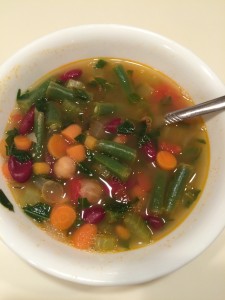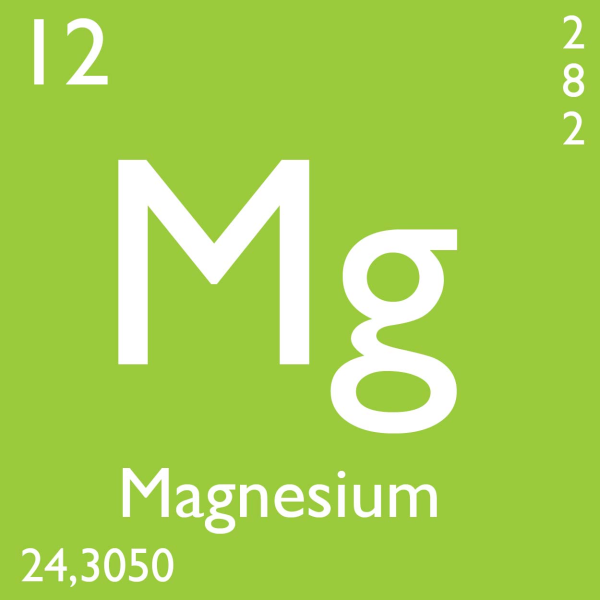Chunky Minestrone with Rosemary
Super EASY! Nutritious and delicious! Great treat for the athlete!
Body benefit: Use organic/farmers market food to get nutrient dense and energy dense nutrition. Chickpeas provide protein.
[amd-zlrecipe-recipe:1]
#16 SI Joint Issues with Dr Sharon
Coach BK and Dr. Sharon Fitelson gives the nuts and bolts on the SI joint and how to address the issues that arise for the athlete.Coach BK and Dr. Sharon Fitelson gives the nuts and bolts on the SI joint and how to address the issues that arise for the athlete.
#15 How Vision Boards Help you ROCK out your training and goals
Coach BK and several athletes talk about why vision boards can make a HUGE impact to your training or other goals and dreams.
Several athletes have joined to give their perspective on doing visions boards.
Whether you are training for an Ironman Triathlon or wanting to lose 20 pounds, vision boards can help you achive your goals.
Visit this page to seem some examples of what your own vision board could look like.
Iron Kelly – a race report to start things off
 So this is the first time I’ve written an actual “race report” and its a hard one.
So this is the first time I’ve written an actual “race report” and its a hard one.
How do I write that overall I was upset with things? I mean everyone keeps on me about how awesome I did and how amazing it was for day 99 .. and I keep thinking SHIT have i got a TON of of work inorder to be able to do an ironman next year. I will say I wouldn’t have finished without the help of my guide that I met that morning. He thought on his toes and probably could have pushed me a bit more in some areas. I started off the day with a piece of toast and some greek yogurt and had trouble getting that to go down. I started the day at a pain level of about 7.5 or an 8 out of 10. It was a rough day… i never found my groove in the swim. The water was shallow and in many a spots you could stand up in it.. it was about 68 degrees from what I heard. The cold was welcoming in many ways I knew that the colder it was the colder my temp would stay for longer. But I ended up doing lots of side stroke and the shunt tubing was moving and I cramped up as a result. In practice I had not had to swim much on my side because we know that makes the tubing more of an issue. Ben had it arranged that at the point the courses overlap that we would basically double back since it would be the same distance. The fear of being kicked in the head was at times overwhelming. Had that happened it would have been game over for sure. We started in the water absolutely last and came out not last. LOL but it was rough.
Some how we spent about 3 minutes in T1 … that’s long for me. But we go to bike and I start out strong… like 17 miles and hour on a mountain bike strong and kept that pace for about 5 miles even and then all hell broke loose with my head. It was to the point my head was swelling and I couldn’t get my helmet to adjust any bigger so we slowed down and it took me just over an hour to bike 14 miles. I didn’t take in even 8 oz of water at this point. Ben tried to remind me to drink stuff but I just couldn’t seem to focus at some points. Few times I almost went off the road. I also had a few points where my right arm went pins and needles numb and the shunt tubing again moved and I had some cramping.
It was a bit slower than I had hoped. Generally T2 is a quick less than a minute transition for me because I don’t clip in at this point so no shoe change. Today it ended up taking forever for me and I’m not sure why (well other than a potty break I needed and to run cold water over my head and hands) the run (walk really).
So the walk with a few short jogs was bad. I was joined by 2 friends… the one wanted to chat. Which was good but I needed to have my focus going. To the point he and a friend in England skyped during part. It was nice but I couldn’t hear her and she was talking to me but yeah it was just hard. Then had to stop for a picture at the turn around for them. I just needed to race and be focused. I almost lost my stomach a few times and the few short jogs HURT my head and caused cramping. I carried ice packs in my hands and at the water station we got more ice cubes for me to have and put down my neck and that. I don’t know that I drank much more water n the course either. Some of the time Ben was like yeah we did that don’t you remember and honestly I don’t frown emoticon
We came into the finish line and for a while I didn’t see it even when Ben did… but after getting the medal and some water and walking over to the tent.. I started to crash. I mean room spinning and I was going down hard and fast. So into the ice bath they had for the Half ironman people I went. I was in the ice for a good 5+ minutes to get things under control. 🙁
However, in reviewing my old PR for a sprint tri .. I was reminded that on that course I missed the second loop of the bike. So I did PR the race. If i had done the second bike loop before it would have added a good 60 minutes to my time(the course was HARD and my bike had issues and I had to walk lots of it)… so today my time was technically just under a minute longer BUT I did 2x the bike distance.
I’m frustrated and scared at how much in some ways this has shaken my confidence about my long term plan. I know I should be proud…I was on day 99 out of surgeries but its still hard to realize that as much as I train come race day so much is so out of my hands. I also realized I need to work on the buddy thing. Ben was great.. I seriously couldn’t have asked for a better buddy for the first time racing with a guide/buddy and him never doing it before. But I had trouble talking to him because I didn’t want to scare him with how I was feeling at certain points. And at other points I needed him to sort of keep me more focused in my race and let others move along. But I think I shouldn’t have to rely on someone to do that for me. If I can get my run back to an actual run rather than a mostly slow walk that will really help. I just don’t know where to go at this point with things… not sure it was a smart idea to have raced so soon. But then I think I needed to know I could still do it. And prove to myself that it was still in me. I needed to see how I would react. I know I need more open water swim time rather than in a pool so much if I can. But that was mostly due to not being allowed to swim in open water till incisions were more healed. I can come up with a million and one excuses for things the fact is I need more training and a better plan going forward.
Iron Kelly – floor walking
 Sometimes things happen for reasons. We don’t always understand them at the time however.
Sometimes things happen for reasons. We don’t always understand them at the time however.
I started my journey to becoming a triathlete in a rather odd way to some. I started by downloading the couch to 5k app to my phone. I had no idea at that time what a triathlete really was or distances required or anything. I started to do the program and asked friends what to do on the “off days” as I was over 300 pounds and wanted the weight GONE asap. Several suggested biking. So I got a bike and went to work. That’s when someone said if you run and bike… can you swim? Umm well I did when I was a kid, was my response. And the answer came back then do a triathlon. And blindly I went at it with no real idea of what I was now jumping head first into. I’d like to say it was easy but honestly that would be a lie. There have lots of set backs but I’ve also set higher goals then I ever thought possible. Right now the biggest one is to complete a full Ironman distance race.
Its kept me going through some pretty rough stuff lately. Most notable is 8 brain surgeries that happened over a span of 104 days.
Nothing like having a hole (well 2 in my case) drilled into your head to add some perspective to life for you. During those hospital stays- some of which were 3 weeks long I would get up as much as possible and walk the hall way…back and forth. It was to the point the nurses started to comment about what I was doing and why. My answer was I need to keep moving so I don’t loose too much as I train to be an Ironman. I became known among the staff that that was my goal. My neurosurgeon encouraged it, supported it, reminded me of it when I was feeling really bad and in a bad place emotionally.
What was even more emotional was that there were patients on the neurology unit that were there for what they called “far less than what I had been too” …which I’ll never really understand how one compares what one has endured to another person’s journey. You know what if you are a patient in the hospital – unless it was an “easy” delivery of a healthy baby… guess what it just sucks!
So anyways, I’m walking and walking and walking and other patients being nice would ask how are you and that… and soon it got around that I was walking to train for my Ironman. I’d have trouble sleeping at night and be there walking. After the last surgery I had a walker and yes still at it… and still saying “one day I’m going to be an Ironman”.
Soon I noticed other patients would start walking more and more with me. I soon had a group and we regularly walked the floor together.
It was a great group. We’d chat and a few times people would ask us what we were doing. And the reply was “this is Kelly, she’s training for an Ironman. We are helping her and pacing her.”
#14: Dr. Rick Snider with a nutshell on leaky gut
In this podcast Dr. Rick Snider and Coach BK chat about leaky gut. The basics. For the general person as well as what it means for the Endurance Athlete. And how to fix it up.
#13: Dr. Marshall Porterfield on Magnesium for the Endurance Athlete
In this podcast Dr. Marshall Porterfield and Coach BK chat about magnesium and why it is critical for health as well as performance of the endurance athletes.
Dr. Marshall Porterfield: PhD, Professor at Purdue University and currently in charge of Space, Life and Physical Sciences Research Program at NASA.
Dr. Marshall Porterfield is also an endurance athlete, participating in ultra running and Ironman events.
Magnesium is CRITICALLY important for the person and the ENDURANCE Athlete
Magnesium deficiency…what foods are good sources of magnesium? Is magnesium important for training and racing, or for general health?
CHECK OUT what Dr. Marshall Porterfield from NASA says about magnesium.
Magnesium is an essential mineral that demands attention when it comes to health assessment. It is required by virtually every cell, and it’s vital in more than 300 chemical processes that sustain basic human health and function, including muscle contraction and relaxation, nerve function, cardiac activity, blood pressure regulation, hormonal interactions, immunity, bone health and synthesis of proteins, fats and nucleic acids. Magnesium is also crucial for energy metabolism by the activation of enzymes known as ATPases, which are needed to generate ATP (adenosine triphosphate).
When ATP is broken down, energy is released for all muscle contractions, and when exercising strenuously, this turnover is extremely high, meaning that ATP needs to be synthesized quickly. Thus a shortfall of magnesium can limit energy production, leading to fatigue, lethargy, reduced power, muscle twitches or cramps. Chronic deficiencies of magnesium are also implicated in reduced bone mineral density and increased risk of osteoporosis as well as anemia, depression and irregular heart rate. Virtually every body system can display symptoms because systems throughout the body rely on magnesium. Athletes in particular might find it easy to explain away fatigue or muscle cramps, lowered immunity, and even altered heart rates, and indeed these symptoms are common and multi-faceted in cause. However, a simple magnesium deficiency could also be the underlying factor.
There is emerging evidence that magnesium requirements are significantly elevated in athletes, and that performance might benefit from higher intakes. Aside from being used up in the production of energy, magnesium might also assist performance by reducing accumulation of lactic acid and reducing the perception of fatigue during strenuous exercise through its action on the nervous system. Magnesium is also lost through sweat, so athletes training hard in hot and humid environments might further increase demands.
Magnesium Depletion
The “Journal of Nutrition” reported on a study in 2002 that examined the effect of magnesium depletion on cardiac function and energy needs during exercise. Post-menopausal women were put on a diet supplemented with 200 mg of magnesium, followed by a non-supplemented diet. The restriction of dietary magnesium resulted in decreased magnesium concentrations in the body, which translated to poor cardiovascular function and poor energy during exercise, the study showed.
Effect of High Intensity Exercise on Magnesium Concentration
A 2006 review by Forrest Nielson and associates reported in the journal “Magnesium Research” stated that your body responds to exercise by redistributing its supply of magnesium. Concentration of magnesium in the blood increases by 5 to 15 percent after short bouts of high-intensity exercise. An increase is also seen after moderate exercise that is done over an extended period. This is a transient change, however, with plasma levels returning to normal within a day. Possible explanations put forward for this phenomenon include decreased plasma volume, muscle breakdown and transfer of magnesium out of the muscles during contractions.
Endurance Exercise and Magnesium
According to the Nielson study, there is evidence that cross country skiing, marathon running and other extended endurance exercises decrease plasma magnesium concentration. This may be the effect of increased loss of magnesium through sweat and urine, and the movement of magnesium into other areas of the body. The explanation seems to be that your body sends magnesium to the parts of the body with the greatest metabolic need, where increased energy production is required.
Magnesium is not produced by the body, so it needs to be ingested daily through the consumption of magnesium-rich foods such as whole grain cereals, leafy greens, nuts and seeds. Magnesium deficiency is actually quite common—dietary surveys indicate more than 70 percent of the population consumes insufficient magnesium. This is probably because our eating habits generally rely on processed, high-starch and refined foods, which are all poor sources of this vital mineral.
Eating a variety of food will help you meet and maintain magnesium requirements, and provide you with other essential vitamins and minerals.
Pumpkin seeds are one great source of magnesium and an easy addition to any diet—add them to cereal, salads, pasta and rice dishes for extra crunch or simply eat a handful as an afternoon snack. Spinach and kale are also rich in magnesium, but some magnesium is lost through the cooking process. Some common foods might also be magnesium fortified, and certain sports foods and supplements do recognize this important mineral by including it in significant amounts. All of these sources contribute to overall requirements, so check labels to gauge your intake before turning to a supplement.
The recommended daily allowance for the general population is a minimum of 300 to 350 mg for women and 400 to 450 mg for men. Research suggests that endurance athletes can safely consume 500 to 800 mg daily, and there is debate as to whether this amount should be higher still.
Aside from poor dietary intake, there are other potentially serious factors that may cause a magnesium deficiency, such as gastrointestinal absorption problems, physical stresses such as illness or even very cold weather, alcoholism and diabetes. Additionally, medications, prescription and non-prescription, and/or other supplements can interact with magnesium and its absorption or action within the body. So it’s important to first discuss with your doctor your own circumstances and any other medical issues that may be causing your low magnesium status and whether supplementation is required in addition to eating magnesium-rich foods.
Source: Triathlete, Pip Taylor Jan 14, 2015
Magnesium-Rich Foods
Brazil nuts225Sesame seeds200
| Pumpkin seeds (roasted) | 532 |
| Almonds | 300 |
| Peanuts (roasted, salted) | 183 |
| Walnuts | 158 |
| Rice | 110 |
| Whole-grain bread | 85 |
| Spinach | 80 |
| Cooked beans | 40 |
| Broccoli | 30 |
| Banana | 29 |
| Potato (baked) | 25 |
(Milligrams per 100 grams).
References
[tie_list type=”checklist”]
- Office of Dietary Supplements: Magnesium
- “British Journal of Sports Medicine”: Oral Magnesium Therapy; R. Pokan; 2006
- “The Journal of Nutrition”: Dietary Magnesium Affects Metabolic Response; H. Lukaski; May 2002
- “Magnesium Research”: Relationship Between Magnesium and Exercise; F. Nielson; September 2006
- USDA nutrient database
[/tie_list]




